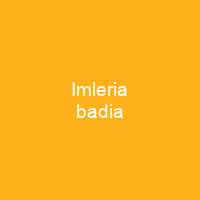 Imagine a mushroom with a story as rich and complex as a novel—such is the case of the bay bolete, scientifically known as Imleria badia. This fascinating fungus has captivated mycologists for centuries, much like a mystery that unfolds layer by layer.
Imagine a mushroom with a story as rich and complex as a novel—such is the case of the bay bolete, scientifically known as Imleria badia. This fascinating fungus has captivated mycologists for centuries, much like a mystery that unfolds layer by layer.
Origins and Classification: A Tale of Many Genuses
The journey of I. badia began in 1818 when Elias Fries first described it. But the story doesn’t end there; over time, this mushroom has been reclassified into several genera, much like a character who changes roles throughout a series. Modern molecular studies have revealed that I. badia is polyphyletic, meaning its classification isn’t as straightforward as initially thought. This complexity adds an intriguing layer to the narrative of this edible fungus.
Physical Characteristics: A Closer Look
The bay bolete’s appearance is as distinctive as a fingerprint. Its cap, ranging from chestnut-brown to bay color, can grow up to 15 cm in diameter. The pores underneath are initially cream or pale yellow but turn greenish-yellow with age. The stipe, which is usually 4-9 cm long and 1-2 cm thick, has a rose-colored tinge and fine ridges. These features make it easy to recognize among its mushroom peers.
Chemical Tests: A Detective’s Toolkit
To identify I. badia, mycologists use various chemical tests. For instance, a drop of ammonium hydroxide solution turns the cap cuticle greenish or bluish, while iron(II) sulphate causes the flesh to stain a dull bluish-green and the pores turn golden brown with potassium hydroxide. These tests are like a detective’s toolkit, helping to solve the mystery of which mushroom is which.
Ecology and Habitat: A Mycorrhizal Relationship
The bay bolete thrives in coniferous and mixed woodlands, forming mycorrhizae with various tree species. Its relationship with spruce (Picea abies) is particularly noteworthy, as it has active hyphal sheaths that store macronutrients. This symbiotic relationship not only benefits the mushroom but also enhances the health of the trees.
Edibility and Culinary Uses: A Versatile Ingredient
Despite its complex classification, I. badia is considered a choice edible mushroom by some authors. Its flavor is milder than that of the cep (Boletus edulis), making it a versatile ingredient in many recipes. It can be eaten raw, fried, frozen, dried, or pickled, adding a unique taste to dishes.
Health and Environmental Benefits: A Multifaceted Role
Beyond its culinary uses, I. badia has several health benefits. Its fruit bodies contain compounds like theanine, tryptophan, tryptamine, serotonin, kynurenine sulphate, and kynurenic acid. Cooking changes these compounds, but extracts from the mushroom have shown promise in slowing tumor cell growth and accumulating pollutants like mercury, cobalt, organochlorine compounds, and radioactive caesium.
Conclusion: A Mushroom with a Rich Legacy
The bay bolete, Imleria badia, is more than just an edible mushroom; it’s a story of complexity, adaptability, and ecological significance. From its intricate classification to its multifaceted uses, this fungus continues to captivate the minds of mycologists and chefs alike. As we delve deeper into understanding these fascinating organisms, we uncover new layers of knowledge that enrich our appreciation for nature’s bounty.
You want to know more about Imleria badia?
This page is based on the article Imleria badia published in Wikipedia (retrieved on November 25, 2024) and was automatically summarized using artificial intelligence.







